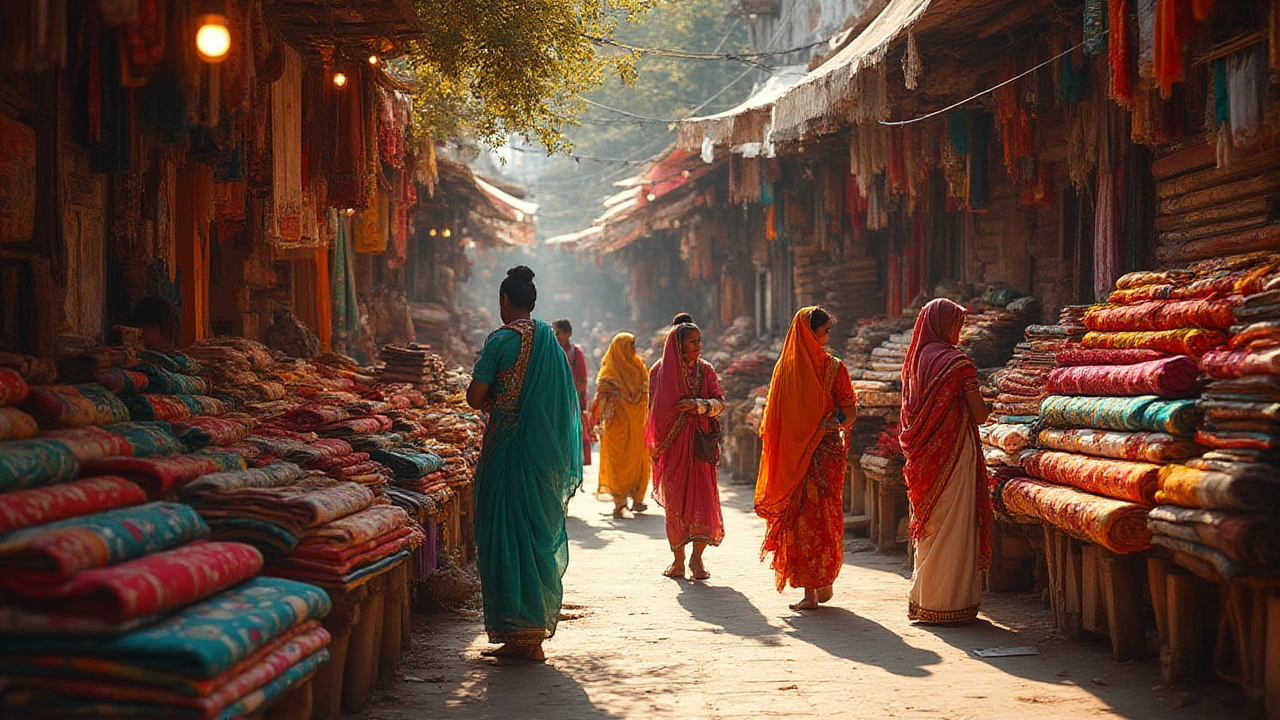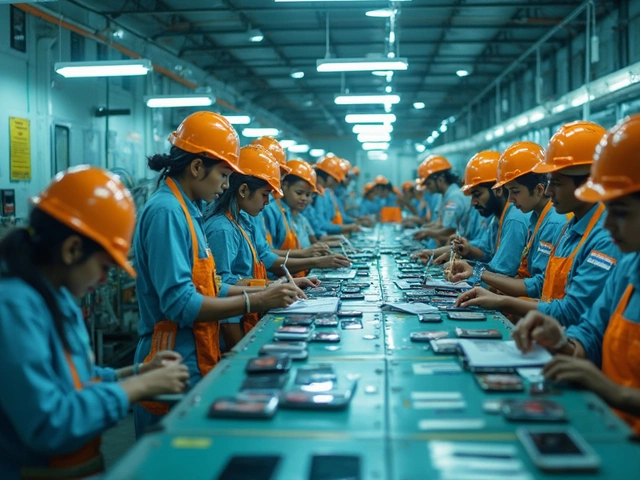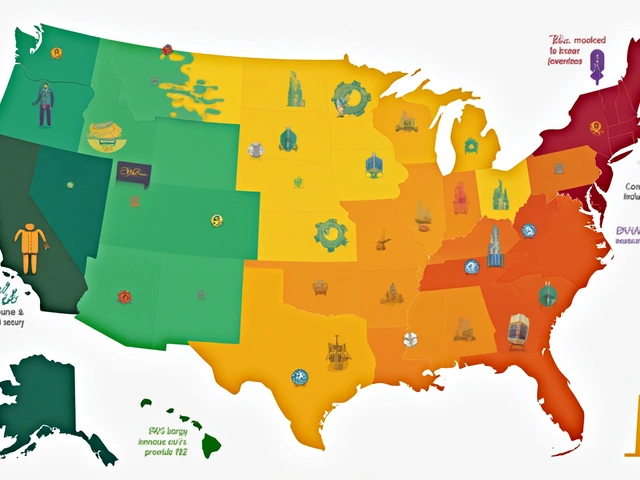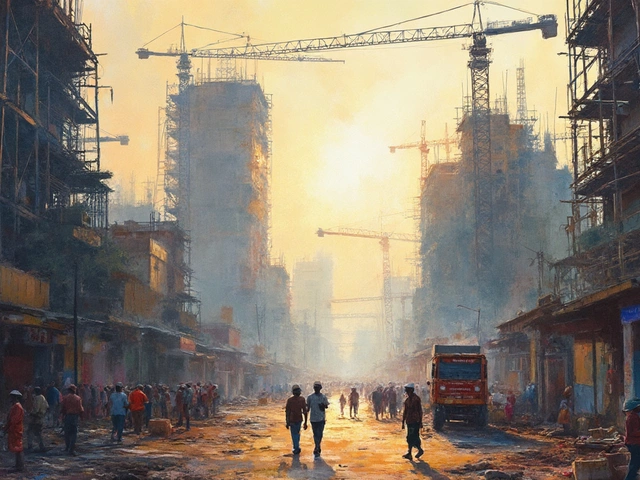Walk into any crowded Indian bazaar and you’ll see fabric everywhere—yards of bold prints, gleaming silks, and soft cottons spilling from tiny stalls. Yet behind all that color is a serious, billion-dollar question that decides what gets woven, spun, and stitched in factories from Surat to Ludhiana: which fabric is actually the most in demand in India? It’s easy to assume it’s all bright polyester saris or lightweight cotton kurtas, but India’s tastes—driven by weather, economics, and sheer love for fashion—are a moving target that keeps the market spinning.
The Reign of Cotton: Why It Still Dominates Indian Markets
Cotton isn’t just an old favorite—it practically defines India’s fabric story. With the country being the world’s second-largest cotton producer and the single largest consumer, cotton makes up a staggering chunk of the textile market. Why is it so beloved? For one, no fabric breathes better during endless sweltering summers. From school uniforms to everyday saris, people rely on its comfort, affordability, and ability to soak up dye, creating endless local prints. Gujaratis are known for their colorful Bandhani patterns, while in Bengal, you’ll spot the airy, almost gauzy taant sarees—all made with regional cotton.
But the numbers make it obvious. According to a 2023 study by the Indian Cotton Federation, over 45% of all fabrics sold for apparel in India are cotton-based. Add to that, cotton farming sustains nearly 6 million Indian farmers each year. Any business hoping to crack the Indian textile market needs to take cotton seriously—not just as a summer favorite, but as a year-round reliable fabric that shows up everywhere, from the most basic bed linens to designer salwar suits. If you’re looking for a low-risk entry into textiles, stocking cotton blends and 100% cotton is almost always a safe bet.
One thing people often overlook: Indian cotton comes in types as varied as the country itself. Shankar-6, Bunny Brahma, MCU-5…these quirky-sounding names aren’t just trivia; they matter because each type performs differently depending on whether it’s going into jeans, shawls, or bedsheets. For manufacturers, knowing these types and regional tastes can help win customers fast. Plus, with India’s recent push on sustainable fashion, organic cotton varieties are suddenly in the spotlight, with brands like FabIndia and B Label making big waves by promoting local, eco-friendly cotton lines.
So, while the glitz of silk or the affordability of synthetic fabric is tempting, cotton’s grip on the Indian consumer is still rock solid. It’s not just tradition or climate—there’s a practicality to cotton that simply won’t go out of style any time soon.
Rise of Synthetics: Polyester, Blends, and Their Surprising Popularity
If you think Indian consumers only want pure, natural fabrics, you’re in for a surprise. Synthetic fabrics—especially polyester—have carved a powerful niche in recent years. Back in the ’90s, polyester was seen as the cheaper, less desirable cousin to natural fibers. But fast-forward to today, and synthetic fabrics make up about 31% of India’s total fabric consumption according to the Textile Ministry's 2024 report.
Why the sudden shift? It starts with price and durability. Polyester is far cheaper to make and sell than cotton or silk, and it holds up well in the rough-and-tumble world of Indian street life. For urban Indians chasing trendy fast-fashion looks or sportswear, polyester blends are everywhere—in T-shirts, school uniforms, athleisure, and even saris. Chiffon and georgette, both synthetic, have become a go-to choice for women wanting that "fashionable, easy-to-wash, and travel-ready" option for everything from college functions to weddings on a budget.
Here’s something that’s not obvious at first glance: Indian textile mills are world leaders in manufacturing synthetic fibers. Surat alone creates more than half of India’s polyester yarn, sending millions of meters out to the rest of the country. Garment exporters love polyester because it’s easy to print bright colors and complex designs, plus the color stays fast even after lots of washes. Durability also means less waste, and in a country where value for money counts, that matters to families on a tight budget.
If you’re considering getting into textile retail, polyester blends—like poly-cotton or poly-viscose—offer a smart entry point. They’re less seasonal, can handle rough washing, and appeal to youth and working professionals who want sharp looks without the fuss. Plus, these blends allow creative mixing: manufacturers can dial up softness, shine, or strength depending on what’s trending in Indian fashion that season. Expect the synthetic share of the market to keep growing, especially as more young Indians turn to online shopping for budget-friendly style and function.
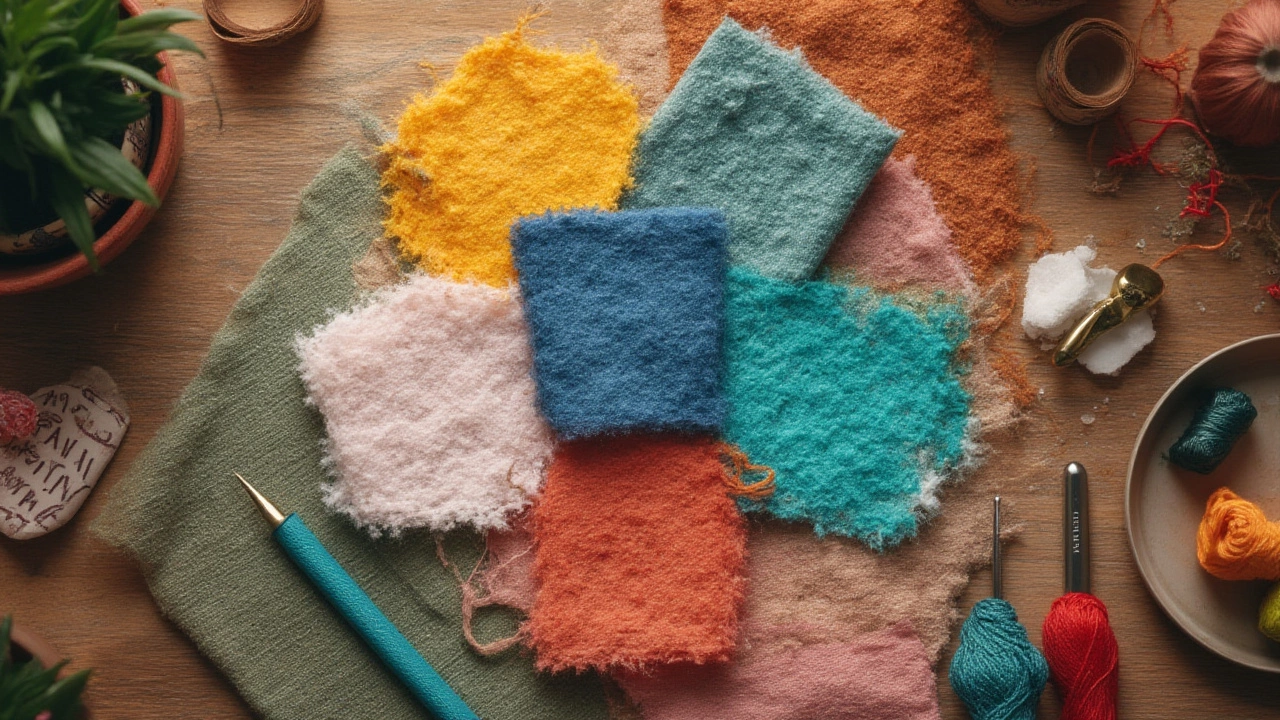
Silk, Wool, Linen, and Regional Specialties: India’s Luxurious Niche Fabrics
Cotton and synthetics may rule the numbers, but let’s face it—India’s global textile fame comes from its luxury and regional fabrics. Silk is the crown jewel. Whether it’s the shimmering Kanjeevarams of Tamil Nadu or the soft, natural Eri silk from Assam, silks have been a symbol of status and ritual for centuries. India actually produces more than 70% of the world’s raw silk, and in 2024, an estimated 8 million Indians made or worked with silk fabric, whether for festival wear, wedding sarees, or export markets.
There’s also a thriving market for linen, especially among India’s growing urban elite. It’s cool on the skin, looks effortlessly expensive, and makes a mark with minimal styling—ideal for India’s new-age entrepreneurs and designers. Similarly, wool finds a place up north in winter months—think of the soft-looking Pashmina shawls of Kashmir or handwoven Himachal caps, all made for those brief, chilly months when comfort triumphs over all else.
Every state, really, has its own textile love story. Rajasthan’s block-printed cottons, Bengal’s handspun khadi, and the shiny brocades of Banaras all weave together the vast and vibrant Indian textile map. This regional diversity isn’t just a look-back at tradition—it’s a goldmine for anyone wanting to tap niche luxury or export markets. Artisans and clusters, often supported by government craft schemes, keep many of these traditions alive, while new-age designers make “heritage cool” by blending old techniques into contemporary styles.
Just to give you a taste of how varied these niche fabrics are, check out the table below:
| Fabric | Main State/Region | Usage |
|---|---|---|
| Kanjeevaram Silk | Tamil Nadu | Wedding Sarees, Festive Wear |
| Pashmina Wool | Kashmir | Shawls, Scarves |
| Khadi Cotton | All India | Apparel, Eco-friendly Wear |
| Linen | Kerala, West Bengal | Summer Shirts, Dresses |
| Ikat | Odisha, Telangana | Sarees, Dupattas |
For anyone strategizing a textile brand, riding this regional wave is smart: these "story-rich" fabrics draw both Indian urban buyers and international markets looking for something unique.
Mass Market Versus Fashion-Forward: How Trends Shape Fabric Choices
The Indian fabric market is never one-note, because tastes swing between classic comfort and cutting-edge style year by year. Festival seasons alone—think Diwali, Eid, Navratri—can radically shift what sells. Suddenly, jewel-toned raw silks and glossy brocades fly off stalls, only to cool off after the holidays when lighter, more practical blends return to the racks. Major Bollywood releases, too, send ripples. Spot a heroine in a sheer georgette saree onscreen and georgette demand soars overnight. In 2024, the film “Dreams of Jaipur” was credited with a 28% boost in demand for digital-printed chiffon fabrics, according to Fashion India Weekly.
Then comes the global influencer: social media. All those quick Instagram reels and #OOTD posts mean young buyers now want what their favorite stars and influencers flaunt. So, brands keep a close eye on what’s blowing up online—if pastel shades, digital prints, or utility wear trends, mills rush to switch their looms. Fast-fashion labels like Zudio or Max Fashion have brought global trends to India’s smaller towns, creating a “see now, buy now” culture that wasn’t so strong just a decade ago.
Yet traditional markets stay surprisingly strong. A 2024 survey by Flipkart found that 68% of buyers over age 35 still prefer pure cotton for daily wear, while the 18–25 crowd is all about blends and synthetics for style and convenience. The growth of “fusion wear” (think: lehenga skirts with crop tops, kurta dresses with sneakers) means designers are mixing textures and inventing wild new blends every season.
So, anyone making or selling fabric in India had better stay on their toes. It’s all about reading signals fast—festivals, viral trends, local weather, and film influence spark sales. Being able to quickly shift between “mass-market must-haves” and “fashion-forward experiments” can mean the difference between sold-out stock and sitting inventory. Tip for retailers: keep an eye on what’s trending for weddings and campus fests. Those two events alone can swing a whole season’s sales.
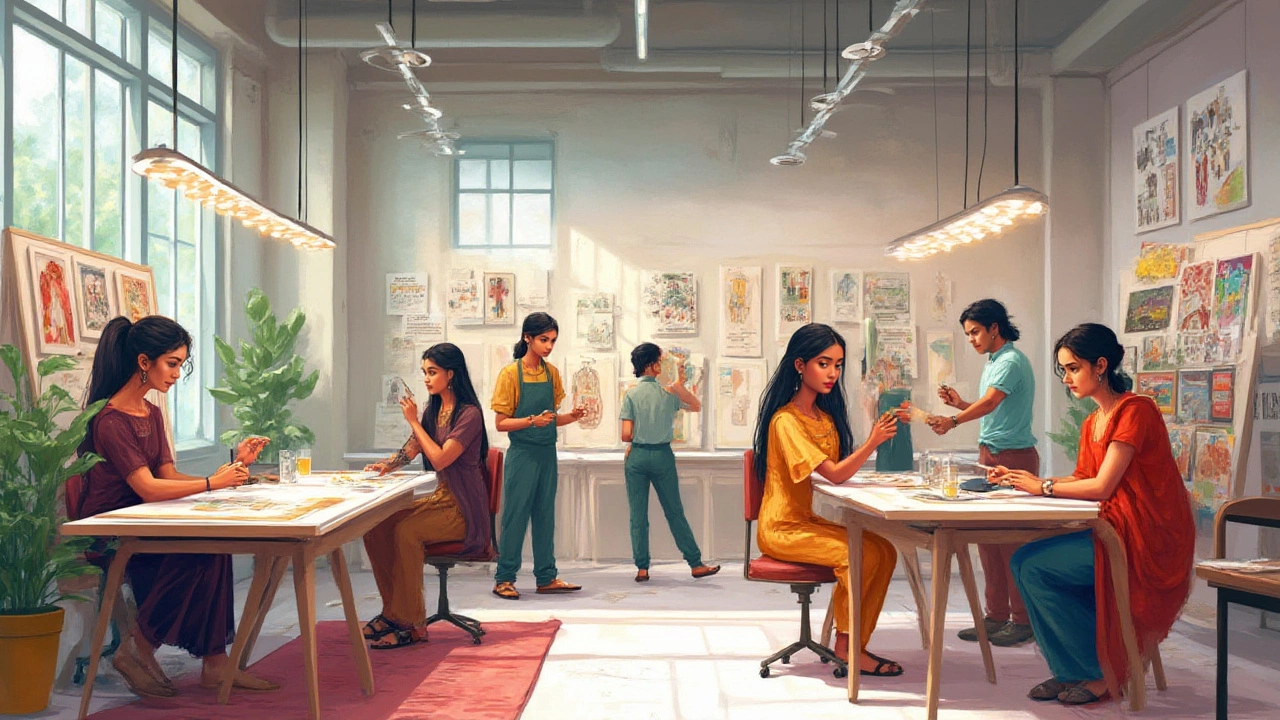
Tips for Textile Entrepreneurs: Where to Bet Big and Play it Safe
Navigating India’s ever-changing fabric scene takes guts, research, and a bit of local wisdom. Here are my top tips if you’re thinking of getting your hands dirty (or at least, your shelves full) in the textile game:
- most demand fabric in India remains cotton—always have this as your base and experiment with blends.
- Tap into synthetics if you’re after youth, budget, or workwear markets; they keep growing, especially in cities.
- Don’t ignore regional or luxury fabric niches—these have lower competition and high loyalty from fashion lovers, especially during wedding and festival seasons.
- Keep stock light but flexible. Festivals and viral social media trends can spike demand overnight, so relationships with local suppliers help.
- Sustainability is catching on fast. If you can access organic cotton or recycled PET polyester, you’re looking at a growing, conscious market, especially among India’s city millennial crowd.
- Sampling matters: younger buyers love to touch and feel before they buy online, so don’t skip fabric swatches or detailed videos for ecommerce.
One last pointer—stay open to learning from the ground up. Talk to tailors, make friends with saree sellers, spend time in small-town markets. The clues about which fabric is catching on next are right there in the way people touch, test, and compare before they buy. India is vast and so is its fashion hunger—so there’s always room for a new story to be woven.
